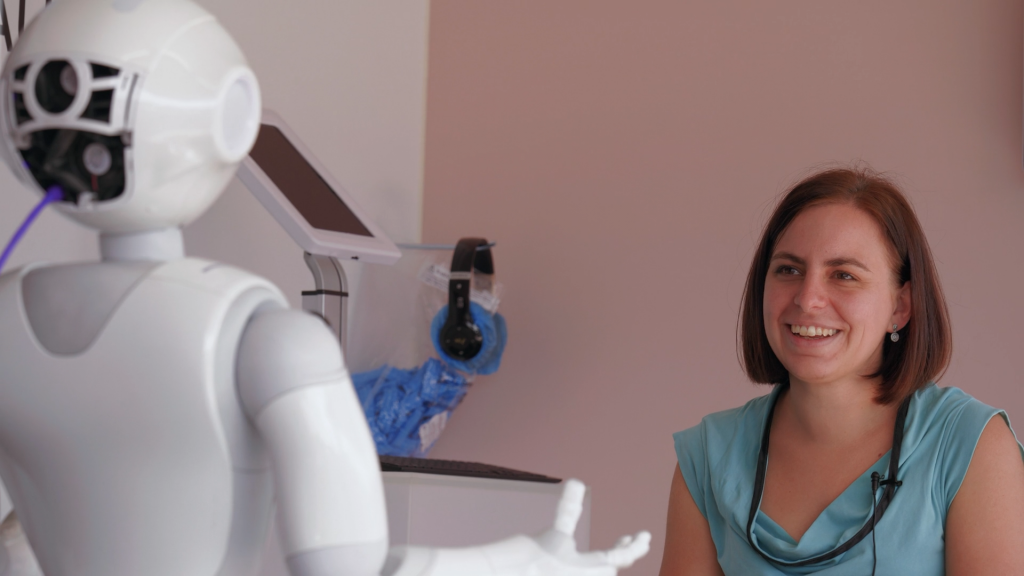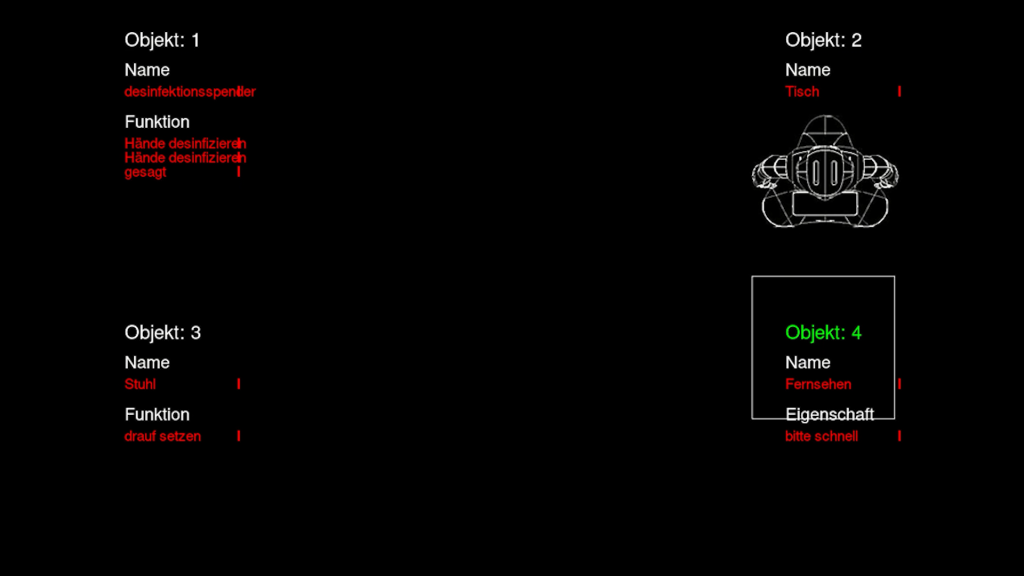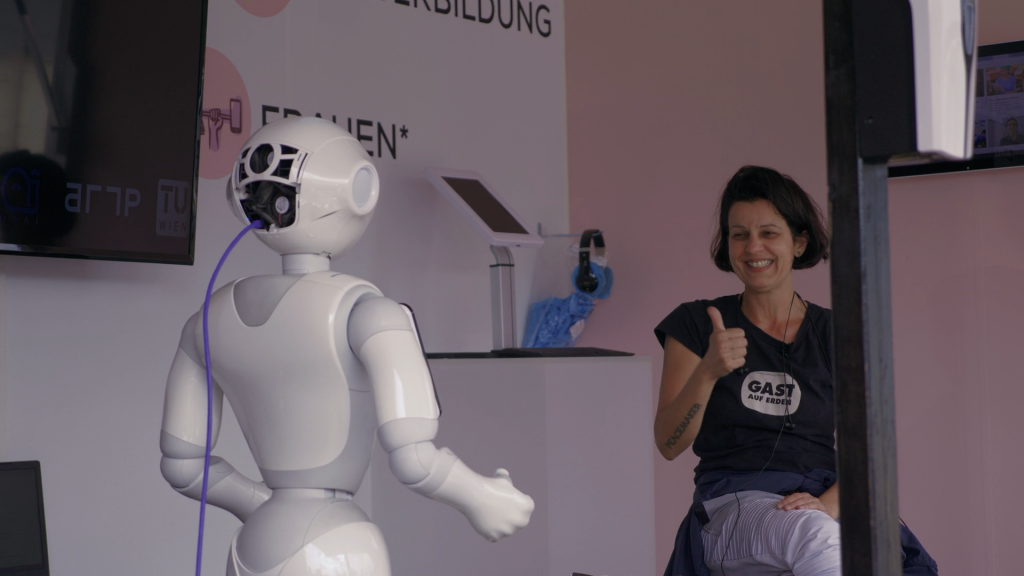Space-game AI, collection of posts
collection of all the posts on our blog, covering the Space-Game AI to generate individual cultural models of space.
(Deutscher Text unten)
The Space-Game AI, Human-Robot Interaction project
A humanoid robot is the communicative interface to our artificial intelligence. The robot asks people about the shared space and the answers are learned by the AI. Humans and robots interact naturally-linguistically and non-verbally. We call this playful interaction a space game. The AI develops a model of the human living space from this.
Challenge:
In humans and technical devices we speak of “perception systems”. But that elegantly obscures their essential differences. Technical devices such as robots obtain information about the human habitat in the form of numbers, geometries and images. In our human perception, however, information is full of personal and cultural meaning, so robots do not act in our human reality. This is particularly problematic in human-robot interaction in nursing, where the well-being of vulnerable people is exposed to the action of powerful robots.
Aim:
We are developing an artificial intelligence that can learn the human meanings of spaces. The proof of concept has shown that our machine learning system generates a spatial model of cultural, human meanings. This spatial model enables a robot to interact in living spaces in a way that is meaningful for an individual human being. In everyday life, this AI will serve to adapt robotic functions to individual human needs.


Die Raum-Spiel KI, ein Human-Robot Interaction Projekt
Ein humanoider Roboter ist die kommunikative Schnittstelle zu unserer künstlichen Intelligenz. Der Roboter befragt Menschen über den gemeinsamen Raum, die Antworten werden von der KI gelernt. Mensch und Roboter interagieren dabei natürlich-sprachig und non-verbal. Diese spielerische Interaktion nennen wir Raum-Spiel. Die KI entwickelt daraus ein Modell des menschlichen Lebensraums.
Herausforderung:
Bei Menschen und technischen Geräten spricht man von “Wahrnehmungssystemen”. Aber das verschleiert elegant ihre essentiellen Unterschiede. Technische Geräte wie Roboter beziehen Informationen über den menschlichen Lebensraum in Form von Zahlen, Geometrieen und Bildern. In unserer menschlichen Wahrnehmung hingegen, ist Information voller persönlicher und kultureller Bedeutung, deshalb agieren Roboter nicht in unserer menschlichen Realität. Dies ist besonders bei Mensch-Roboter Interaktion in der Pflege problematisch, wo das Wohl von verletzlichen Menschen dem Agieren von wirkmächtigen Robotern ausgesetzt ist.
Ziel:
Wir entwickeln eine künstliche Intelligenz die menschliche Bedeutungen von Räumen erlernen kann. Der Proof of Concept hat gezeigt, dass unsere Machine-Learning-System ein räumliches Modell von kulturellen, menschlichen Bedeutungen generiert. Dieses Raummodell ermöglich einem Roboter, auf für einen individuellen Menschen bedeutsame Weise, in Lebensräumen zu interagieren. Im Alltag wird diese KI der Anpassung robotischer Funktionen an individuelle menschliche Bedürfnisse dienen.

All posts about the space-game on the H.A.U.S. blog:
Alle Posts zum Raum-Spiel am H.A.U.S. Blog:
https://h-a-u-s.org/index.php/category/space-game/